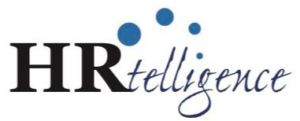Client Alert
Powered by
New York City Amends Safe and Sick Time Regulations
Recently, the New York City Department of Consumer and Worker Protection (“Department”) issued a Final Rule amending the Earned Safe and Sick Time Act (“ESSTA”) regulations to align with the statutory amendments made by the 2020 New York State Paid Sick Leave Law. The rule amendments also provide additional clarification for employers about their compliance obligations. The amendments will take effect on October 15, 2023. Following is a summary of some of the key changes.
Calculation of Employer Size
The Final Rule clarifies that an employer’s size is determined by its total number of employees nationwide and part-time employees are counted equally with full-time employees. In addition, employees who are jointly employed by more than one employer are to be counted toward the totals of both employers, regardless of whether the individual appears on the employer’s payroll. Further, employees on leaves of absence, suspensions, or other temporary absences count toward the total number of employees, provided that the employer has a reasonable expectation that the employee will return to active employment at a later date.
Covered Employees
In light of the increase of remote workers in the workplace since the pandemic, the Final Rule specifies that an employee who only performs work, including by telecommuting, while physically located outside of New York City, is not employed for hire within the City of New York and not covered by the ESSTA, even if the employer is located in New York City. However, an employee with a primary work location outside of New York City is to be considered a “New York City employee” if they regularly perform or are expected to regularly perform work within New York City at any point during the calendar year. For these employees, only hours worked within New York City must count toward the accrual of safe and/or sick time under the Act. Any employee who performs work while physically located in New York City is covered by the ESSTA, regardless of where the employer is located.
Employee Notification of Use of Sick Time
Pursuant to the ESSTA, an employer may require an employee to provide reasonable notice of the need to use sick time, provided the requirement to provide notice and the method of providing notice are set forth in the employer’s written policy. The Final Rule provides that an employee can give notice by sending an email to a designated email address or submitting a leave request in a scheduling software system, provided the employee has access to such system on non-work time, and has been trained on and given written instructions on how to use the system.
The amendments set forth in the Final Rule differentiate between when notice may be required for an “unforeseeable” absence (as soon as practicable) and a “foreseeable” absence (up to seven days in advance of the absence). An absence may only be considered “foreseeable” if the employee is aware of the need to use safe and sick time seven days or more before the use. If an absence is “unforeseeable,” notice should be given as soon as practicable.
The Final Rule reiterates that employers requiring written documentation of an employee’s need for sick time must reimburse employees for all fees charged by a licensed health care provider and for all reasonable costs incurred in obtaining documentation for safe/sick time.
Reporting Available Leave and Accrued Leave
The Final Rule provides that employers can report available and used safe/sick time leave by (1) alerting the employee each pay period to the availability of the required information, (2) making the information readily available outside of the workplace within the electronic system, and (3) maintaining accrual, use, and balance information for any past pay period so that it is readily accessible to the employee outside of the workplace.
Rate of Pay
The Final Rule clarifies that the employee’s “regular rate of pay” for purposes of the ESSTA means such rate at the time the safe and sick leave is taken, provided that the rate of pay is not less than the highest applicable rate of pay to which the employee would be entitled under applicable law, rule, contract or agreement.
What Employers Should Do Now
If they have not already done so, employers should update their safe and sick leave policies to ensure compliance with the Final Rule. Should you have any questions regarding the recent changes, please contact Ali Law Group.













